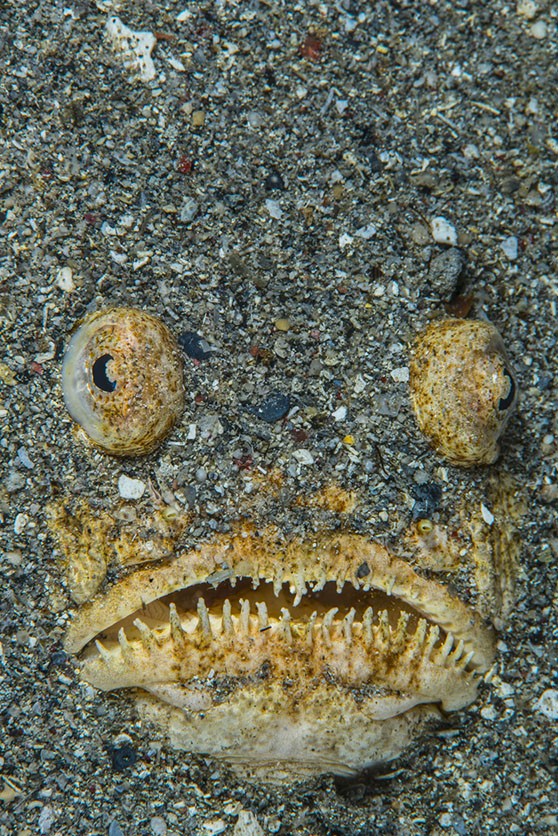Hidden World of Narragansett Bay on the Rebound
October 4, 2017
When imagining the places on Earth with the highest diversity of species, the Amazonian rainforests, the jungles of Southeast Asia, or the plains of Africa likely come to mind. Seldom are marine habitats considered. And when they are, it’s coral reefs that get most of the attention.
But biologist Steve Hale noted that two-thirds of all animals on the planet live on or in seafloor sediments, or what scientists call the benthic environment. And when only calculating the marine species, about 98 percent live in the sediments.
A research ecologist with the Environmental Protection Agency in Narragansett, R.I., for the past 20 years, Hale recently finished compiling a master list of all the species ever recorded in the sediments of Narragansett Bay. He discussed the project at a Sept. 28 Rhode Island Natural History Survey lecture.
The list includes 1,056 species, and Hale believes there may be another 200 to 300 still to be found. Most live in the top 10 centimeters of the bay’s sediments. The most abundant creatures recorded are varieties of polychaete worms, mollusks, and arthropods.
“But rare species make up most of the biodiversity,” he said.

Included among the rare variety were 395 singletons — species found only once — and 224 doubletons. Another 279 were captured prior to 1950 and haven’t been seen again due to range shifts, pollution, the effects of invasive species, and other factors.
Based on his analysis, Hale said the biodiversity of benthic organisms in Narragansett Bay declined from the 1880s to the 1980s because of pollution produced during the Industrial Revolution, raw sewage, heavy metals, and other toxins released into local waters. The filling in of salt marshes, the disappearance of eelgrass beds, and other habitat destruction also caused a decline in benthic diversity, he said.
But as Narragansett Bay was cleaned up in the later years of the 20th century, benthic biodiversity experienced a partial recovery, though it hasn’t yet achieved pre-industrial levels and may never do so.
To compile his master species list for Narragansett Bay, Hale scoured every bit of historical data he could find. Most came from online databases maintained by the Smithsonian Museum of Natural History, the Harvard Museum of Comparative Zoology, and the Yale Peabody Museum of Natural History.
But he also uncovered reports of species collected by professional and amateur naturalists as far back as 1834, when the chief engineer for the construction of Newport’s Fort Adams, Joseph Totten, took samples from the bottom of Narragansett Bay and published a report of his findings.
In the succeeding decades, notable scientists visited the area and contributed data, including Alexander Agassiz, who established the Newport Marine Zoological Laboratory at Castle Hill in 1873 and was dubbed the first oceanographer of Narragansett Bay, and Addison Verrill from Yale University, the first to use a steamship to collect benthic samples in the bay.
The 99 different studies that Hale compiled represents surveys of 200 different sites around the bay.
“Only about 600 square meters of sediment has been sampled,” said Hale, noting that it represents about 0.000002 percent of the bay’s area. “But we still think about 80 percent of all the species have been found.”
Benthic creatures perform vital ecosystem services, according to Hale. They filter water, sequester carbon, process waste, recycle nutrients, provide food for birds and fish, and provide nursery habitat for marine organisms.
Although Narragansett Bay seafloor communities have rebounded as the bay has become cleaner, Hale said they must still deal with numerous unhealthy stressors, from stormwater runoff and toxins in the sediments to invasive species and low dissolved oxygen levels.
“When we have our seasonal hypoxia [low oxygen] events in the upper bay, our rare species get hammered,” Hale said. “They’re very sensitive to disturbances and susceptible to local extinctions.”
Increasing water temperatures caused by climate change will likely lead to changes in the range of some species, which will alter the composition of the species in Narragansett Bay.
Will the bay’s benthic communities continue their recovery? Hale said it’s hard to say.
“We’ve made a lot of progress by putting a lot of money into improving our sewage treatment plants,” he said, “but non-point sources of pollution are still a problem. Mix that with invasive species and warming waters, and it’s hard to say how things are going to go. I don’t have a good answer to that, but I’m hopefully optimistic.”
Rhode Island resident and author Todd McLeish runs a wildlife blog.




Excellent…!